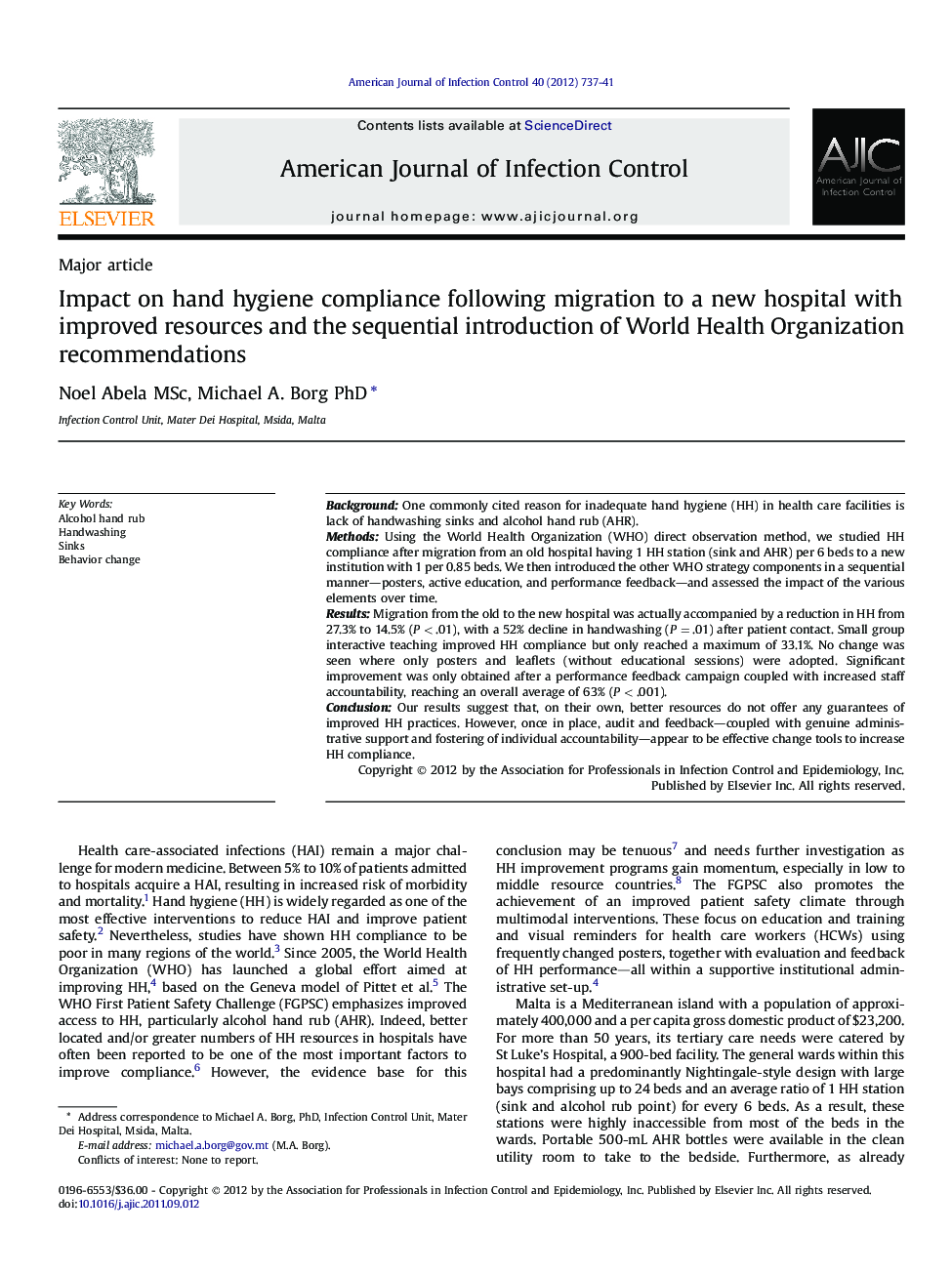| Article ID | Journal | Published Year | Pages | File Type |
|---|---|---|---|---|
| 2637748 | American Journal of Infection Control | 2012 | 5 Pages |
BackgroundOne commonly cited reason for inadequate hand hygiene (HH) in health care facilities is lack of handwashing sinks and alcohol hand rub (AHR).MethodsUsing the World Health Organization (WHO) direct observation method, we studied HH compliance after migration from an old hospital having 1 HH station (sink and AHR) per 6 beds to a new institution with 1 per 0.85 beds. We then introduced the other WHO strategy components in a sequential manner—posters, active education, and performance feedback—and assessed the impact of the various elements over time.ResultsMigration from the old to the new hospital was actually accompanied by a reduction in HH from 27.3% to 14.5% (P < .01), with a 52% decline in handwashing (P = .01) after patient contact. Small group interactive teaching improved HH compliance but only reached a maximum of 33.1%. No change was seen where only posters and leaflets (without educational sessions) were adopted. Significant improvement was only obtained after a performance feedback campaign coupled with increased staff accountability, reaching an overall average of 63% (P < .001).ConclusionOur results suggest that, on their own, better resources do not offer any guarantees of improved HH practices. However, once in place, audit and feedback—coupled with genuine administrative support and fostering of individual accountability—appear to be effective change tools to increase HH compliance.
